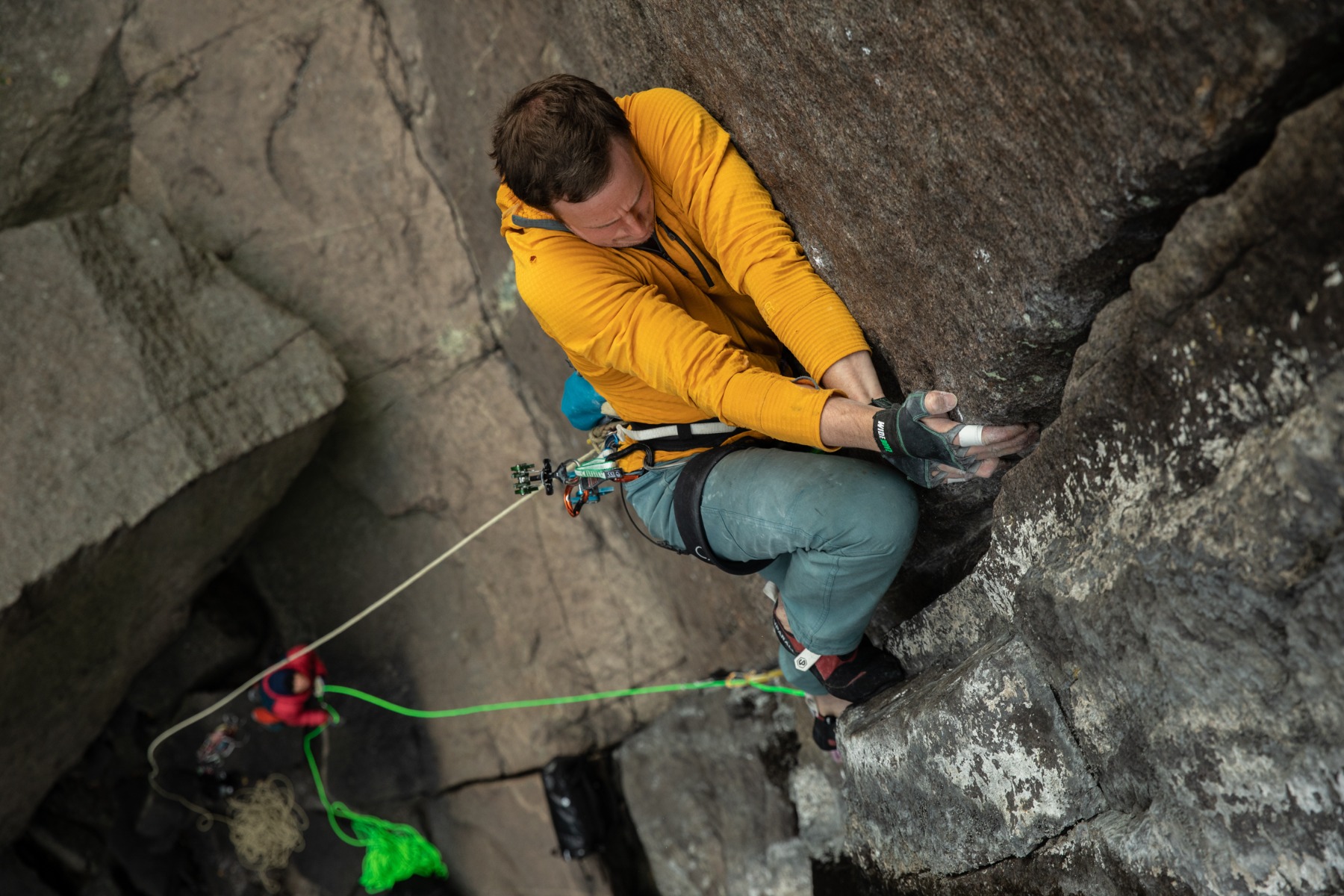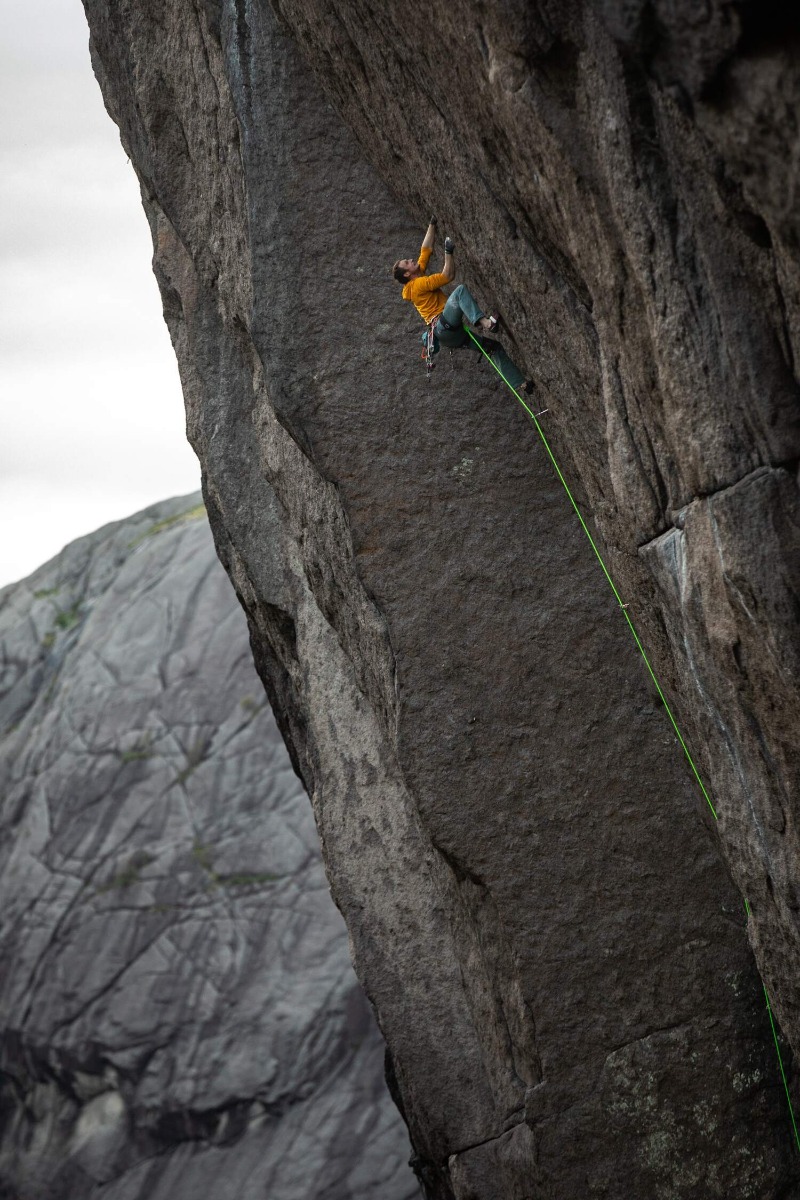Never as today has the climbing world been characterized by a contamination between its different disciplines, or between styles that we all believed they would have had to take totally independent paths. Alessandro Lamberti is also on the same page, as we can read in the “Sport bouldering” page of Jollypower vol.2: a few years ago, only a few of us would have imagined that bouldering enthusiasts would have not occasionally disdained some multipitch routes and that maybe some sport climbers would have also taken their first steps in ice climbing.

Pete Whittaker climbing on Lamb of God 5.14, credits Tom Randall
In this vertical world that is always changing, and precisely for this reason also growing, there are today fewer and fewer "specialists" of the single disciplines (excluding the "competition world", of course), especially among the youngest. There are of course some exceptions: we can find many of these in trad climbing, where the experience needed to achieve great results is an essential element and all-encompassing.
Pete Whittaker is, today more than ever, the undisputed king of trad: and "royal" is also his last trad route freed in Norway - Crown Royale, in fact - an extreme line both for the difficulty and the length, considering it has been climbed like “an ordinary 100 metres lenght” single pitch.
Crown Royale is the connection between two already existing lines that Pete had already climbed during some previous climbing trips to Norway. In order to climb this route like a single pitch, he used a 80metres long rope, then free soloing the last twenty metres. And, last but not least, it has been graded 9a, defining it as one of the hardest trad lines in the world.

(c) Patagonia _ Andrew Burr
HI Pete, thanks for joining us! First of all, how are you and where are you right now?
Thanks, I am currently finishing a climbing trip to the USA. I have a few more days left before heading home for the winter.
You have recently done the magnificent First Ascent of Crown Royale "the king line" of the Profile Wall in Jossingfjord. As we already said in the introduction, it is a connection between two existing lines, thus resulting in a 100 mt length pitch. Have you considered trying it as a single pitch from the very beginning or after realizing there would have been some difficulties in the belaying or rope management?
Yes It had always been my intention to climb the full line. The only reason I climbed it in two shorter pitches to start with was to give myself small stepping stones to be able to build up to climbing the full thing. I don't think the rope management is such a problem, apart from a short rightwards traverse the line is mainly straight up. The weight of the rope at the top is quite a lot but the climbing gets easier up there so it's manageable.

Credits Mike Hutton
You climbed the last part without rope protection: has the idea of free soloing always sounded good and rational to you, or has it been something like an obligatory choice?
The part of the route where I united and free soloed to the top was very easy, like very very easy. It was always the plan, and I had no problems with it. Free soloing is something I have done a bunch of in the past, so it didn't seem like a big deal to do it here.
So, you have climbed the last section without rope other times besides the "good attempt"?
Like mentioned above, the part where I free soloed was incredibly easy, honestly not a problem. I had also climbed it before when doing other routes that top out the wall.
In other interviews about Crown Royale, you have said that this route is 50/50 split between crack climbing and face climbing: is there something in the world that reminds you of this style or is it really something unique in its genre?
Yes that is correct, the climbing on this wall is quite split. It is useful to be competent in both 'normal' style of climbing and crack climbing. For example it's very different to the desert splitters in America, which are mostly pure jamming. I think there is a whole bunch of granite climbing worldwide that offers a good balance of both normal style and crack climbing combined in to the same route. I don't think this is unique for The Profile Wall.

(c) Patagonia _ Andrew Burr (2)
Considering its length, we can imagine it is of course an endurance test piece but also a significant mental battle: how do you manage this aspect of such a long route?
A couple of things. One is pacing, making sure you are moving quickly and efficiently through the hard sections, but then knowing how to slow down and rest when the time comes, this is important so you don't burn out. The other thing is breathing, as you are on the wall for so long, breathing well helps to relax, get psyched up and keep good oxygen follow for the long period of time you are on the wall.
Recently we have also seen the "Lord of Trad" video on Youtube, where you have defined Czech crack climbing as "hardcore": How can you deal with such a climbing style, where falling is not part of the plan? Does the perception of your personal limits change?
In places like the Czech, where falling a lot of the time is not an option, I think it's really important to have a good understanding of your own ability, this is the main thing. Knowing your ability and limits and not being afraid to back off if necessary is what keeps you safe. This only comes with climbing a lot and learning from past experiences
Let's talk about the future! Are you traveling anytime soon?
I am just at the end of a long trip, so will take a little down time at home through the winter and get ready for spring. The past few months have been quite project orientated and that can take a lot of mental energy, so it's good to actually relax so you don't burn out.
Thanks Pete!
